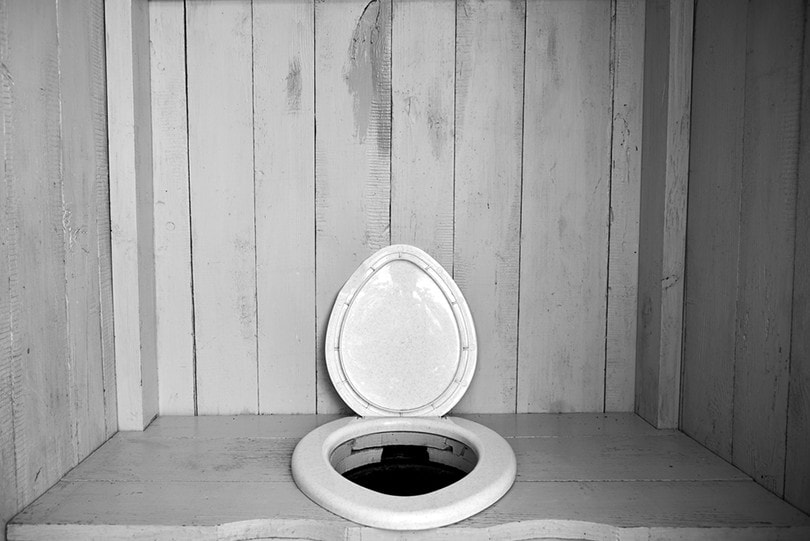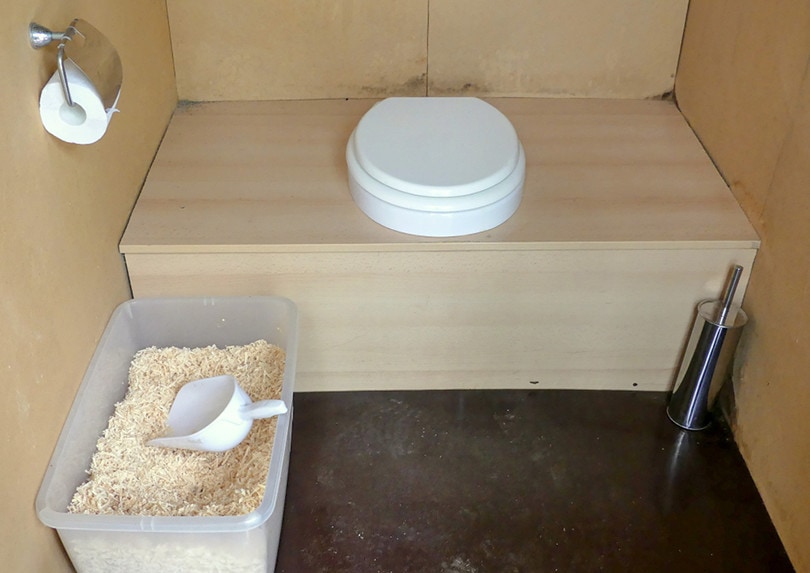How Much Does a Composting Toilet Cost in 2025?
-
Shea Cummings
- Last updated:

Federal regulations dictate that toilets should use no more than 1.6 gallons of water per flush (GPF). However, many toilets made before 1992—yes, toilets made over 30 years ago are still flushing—may be using up to seven GPF. These old toilets aside, even modern toilets use a lot of water in a year.
Using a composting toilet gives us an alternative. By mixing human waste with other materials such as sawdust or peat moss, not only do we use a fraction of the water, but it eliminates odor through anaerobic processing.
Which Composting Toilet to Use

Not all composting toilets are the same and depending on your particular living situation, different types may be more applicable. There are two main systems to choose from.
- Self-contained: If space is an issue or you’re living in a multi-story home, then this system will probably be the ideal option. With a self-contained system, everything is connected.
- Centralized: Unlike the self-contained system, everything is flushed into a large tank. This tank will either be under your house or, in some cases, outside. There are many different variations of this system. Each flushes differently and has a different number of chambers for holding waste. If you’re not entirely sold on the idea of a composting toilet, a centralized system will give you the closest experience to a traditional toilet flush.
How Much Does a Composting Toilet Cost?
The idea of a composting toilet is fine and dandy, but it is rare for it to be the original installation in a new building in most cases. So, you’ve got to wonder how much it costs. Determining that will again depend on the type of system you opt for.
Self-contained: Because of their design, a self-contained system is generally the more affordable system. Typically, the starting cost is around $1,400. If you want a fancier or more aesthetically pleasing design, you can expect to pay more. Also, this is the price for the unit. You’ll have to pay labor for someone to install it for you.
Your other option for a self-contained system is to build one yourself. Many DIY plans are available, and most can be built for around $50 in materials. A DIY version will rarely be as nice as the designed system.
Centralized: A centralized system has a much broader cost spread. There are some models available starting as low as $1,100. However, they can also reach prices of $13,000 quite easily, depending on the size and complexity of the system you decide to use.
Maintaining a Composting Toilet
The beauty of composting toilets is that there are not a lot of ongoing costs involved. The only significant cost is the material you use to cover the waste. If you’re using sawdust, it’s relatively cheap. Some of the other materials can get a bit pricier.
Another potential cost is if you have a toilet in a business building. Then there will be the ongoing cost of having someone hired to empty it regularly. If it’s a home thing, this isn’t so much of an issue.
If the composting toilet isn’t vented correctly, another cost that may come up is the need to install a small fan. Usually, these are relatively cheap and can be run on minimal power. So, they won’t be a huge maintenance cost.

Pros & Cons of a Composting Toilet
You may be wondering if the pros outweigh the cons. Below, we will lay out several pros and cons for you so you can decide for yourself if a composting toilet is for you.
- Greatly reduces water usage
- Flexible options for new development
- Less negative impact on our environment
- Decreases your overall household maintenance costs
- Reduces marine pollution
- Many systems require a power source
- A composting toilet isn’t typically nice to look at
- Manual waste removal—more often on a smaller unit
- Often need to be used with a greywater system
 FAQs
FAQs

Can you pee in a composting toilet?
It depends on the system. Some composting toilets have one chamber for everything, while others have two chambers. In these, you pee like usual, and the urine automatically goes to the correct chamber.
Does a composting toilet smell bad?
When done properly, there should be very little odor with a composting toilet. If there is an odor, sometimes all it needs is better ventilation. This can usually be accomplished with a small fan.
Do you need electricity for a composting toilet?
Again, this one depends on the type of toilet you go with. If you go with a basic, self-contained system, it probably won’t need electricity. However, many centralized systems do need some form of power.
How often does a composting toilet need to be emptied?
A good rule of thumb to go by is every 3 months. Determining factors that could change this would be the amount of use it gets, the size of the composting chamber, and the type of unit.
 Conclusion
Conclusion
Many people are jumping on the composting train. Even in big city apartment complexes, the landlords put out community compost bins to encourage everyone to join in this eco-friendly practice. However, a composting toilet is not for everyone. We hope this article has given you a reasonable cost versus benefit analysis of whether a composting toilet will be suitable for you and your family.
See also: What States Allow Composting Toilets? What You Need To Know!
Featured Image Credit: zvirgzds, Shutterstock
Contents
